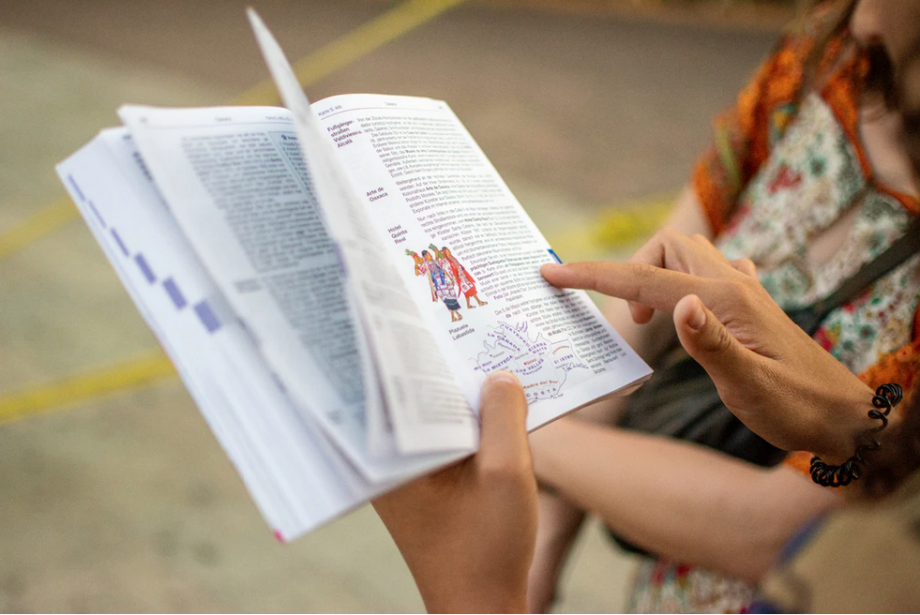There are plenty of textbooks which serve as the main guidance while teaching/learning English. However, teachers can not always rely only on textbooks as all students have different learning goals. Teachers have to add student-focused and communicative activities to actually “bring the language to life”. In this article we will suggest some practical methods of making the textbook material more communicative:
- how to make the best use of the existing material in the textbooks to have more communicative lessons:
- what kind of organizational changes will make the textbooks more communicative.
A. How to adapt the textbook material
The main idea of this point is to extend the already existing tasks in the textbook and make them more communicative. We can do it while doing reading, vocabulary work, grammar work, etc.
Reading
- There are a number of ways which can make the reading passage more engaging for students. If the text doesn’t have headings, teachers can create their own ones for all but the last paragraph and ask learners to match paragraphs and headings. Students discuss in pairs to match and support their choice. As a second stage, learners work in pairs to write their own heading for the last paragraph. They again need a thorough discussion to think of an appropriate heading. After finishing they check/compare their answers with opposite pairs which give an extra chance for talking and reasoning their choice.
- Ask students to create a summary of the text.
- Most of the books offer some comprehension questions or True/False statements as the main reading activity. To make it more engaging, the learners can do Jigsaw reading, which means that each learner is given one part of the text to read. Later they sum up the information they have learnt to their partner and together complete the reading exercise suggested by the book.
Vocabulary
- Teachers usually carry out a lot of work on unknown vocabulary. After vocabulary work, students should always have practice on speaking for fluency with the use of that new
Grammar
- The teacher can create a type of grammar quiz in which learners have to go through a text to find examples of different types of structures which they have covered. For example, find a comparative form, write as many adjectives as you can see, an example of a passive form, three different tenses, etc. This activity can be easily turned into a competition when students work in teams to find those structures. Learners work in pairs or small groups and need to support their answers by saying why this or that form is Passive tense, a comparative form or why this or that word is an adjective. This is a nice activity to add extra fun and increase learners’ language awareness.
- A simple grammar activity which is designed as a controlled practice can be turned into a speaking activity where students use the questions and interview each other. Suppose students have the following task (Put the word or phrase in the right place in the question).
- Where do you from? (come)
- How often you read magazines? (do)
- Where were born? (you)
They complete the task, check the answers in pairs and interview each other using the questions from the exercise.
B. Organizational Changes
In many cases, the teacher may keep the content of the textbook material but change the way it is introduced by varying the interaction type (Student-student, teacher-student, group work, open class discussions, etc). Here are some nice activities referring to this point.
- Where possible use think-pair-share method.
- Assign a project work. The teacher can choose one project for the whole class, divide the project into different parts so that each group is busy with different tasks related to the same project. Later, they get mixed with different group members and present the results of their work.
- A fill in the gap exercise can be turned into a communicative poster presentation activity. The teacher copies the sentences from the exercise on the poster and leaves gaps. The words to be filled in the blank spaces are stuck on the wall (two sets since you have two groups). Divide learners into two pairs. One student in a pair reads the sentences, the second one runs to the wall, ask questions and try to find the word to fit in the blank, for example, “Do we need a noun? Do we need a positive adjective? Is it this adjective about size or shape?” The pair to finish the first with the most correct answers will win.
All these tips will help the teacher to experiment with whatever the book already offers. However, in case you need some extra resources to supplement the material, follow this link to find some useful ideas.






 Маргарита Аветисян
Маргарита Аветисян 
 Вероника Аветисян
Вероника Аветисян 


